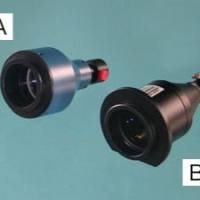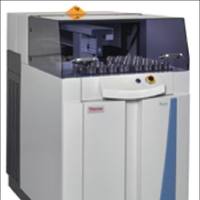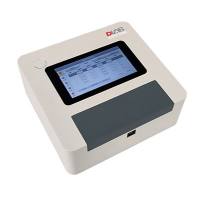High Resolution as a Key Feature to Perform Accurate ELISPOT Measurements Using Zeiss KS ELISPOT Readers
互联网
1189
The enzyme-linked immunospot (ELISPOT) assay was originally developed for the detection of individual antibody secreting B-cells. Since then, the method has been improved, and ELISPOT is used for the determination of the production of tumor necrosis factor (TNF)-α, interferon (IFN)-γ, or various interleukins (IL)-4, IL-5. ELISPOT measurements are performed in 96-well plates with nitrocellulose membranes either visually or by means of image analysis. Image analysis offers various procedures to overcome variable background intensity problems and separate true from false spots. ELISPOT readers offer a complete solution for precise and automatic evaluation of ELISPOT assays. Number, size, and intensity of each single spot can be determined, printed, or saved for further statistical evaluation. Cytokine spots are always round, but because of floating edges with the background, they have a nonsmooth borderline. Resolution is a key feature for a precise detection of ELISPOT. In standard applications shape and edge steepness are essential parameters in addition to size and color for an accurate spot recognition. These parameters need a minimum spot diameter of 6 pixels. Collecting one single image per well with a standard color camera with 750 � 560 pixels will result in a resolution much too low to get all of the spots in a specimen. IFN-γ spots may have only 25 �m diameters, and TNF-α spots just 15 �m. A 750 � 560 pixel image of a 6-mm well has a pixel size of 12 �m, resulting in only 1 or 2 pixel for a spot. Using a precise microscope optic in combination with a high resolution (1300 � 1030 pixel) integrating digital color camera, and at least 2�2 images per well will result in a pixel size of 2.5 �m and, as a minimum, 6 pixel diameter per spot. New approaches try to detect two cytokines per cell at the same time (i.e., IFN-γ and IL-5). Standard staining procedures produce brownish spots (horseradish peroxidase) and blue spots (alkaline phosphatase). Problems may occur with color overlaps from cells producing both cytokines, resulting in violet spots. The latest experiments therefore try to use fluorescence labels as a marker. Fluorescein isothiocyanate results in green spots and Rhodamine in red spots. Cells producing both cytokines appear yellow. These colors can be separated much easier than the violet, red, and blue, especially using a high resolution.









